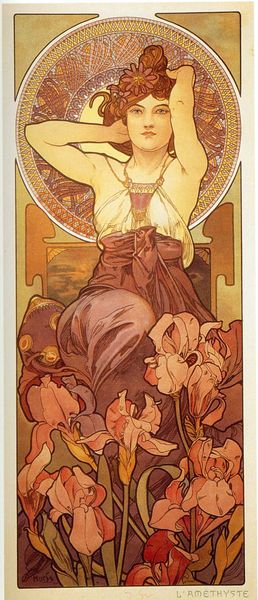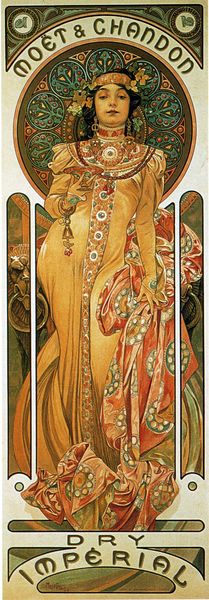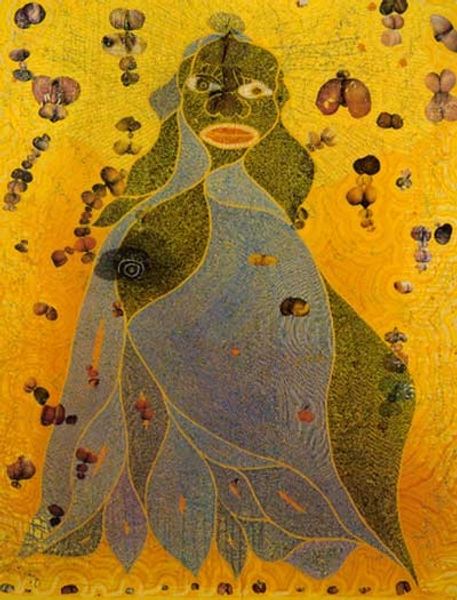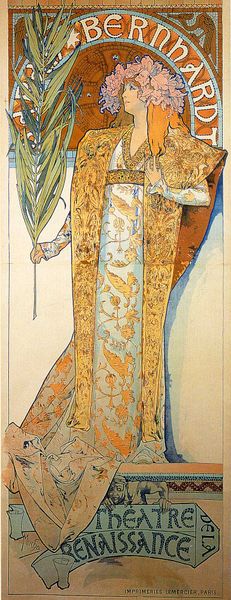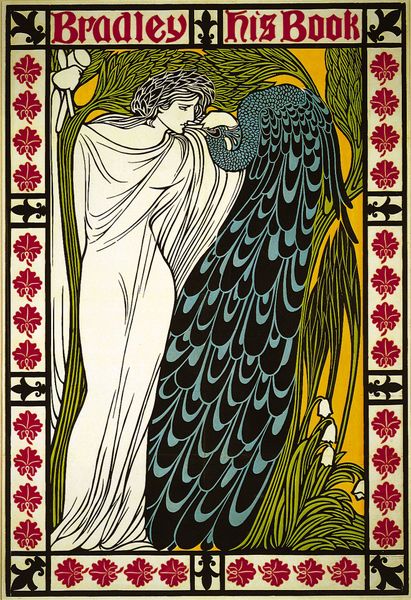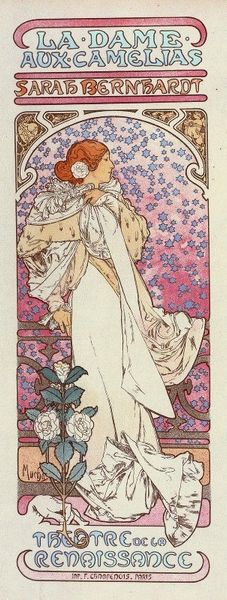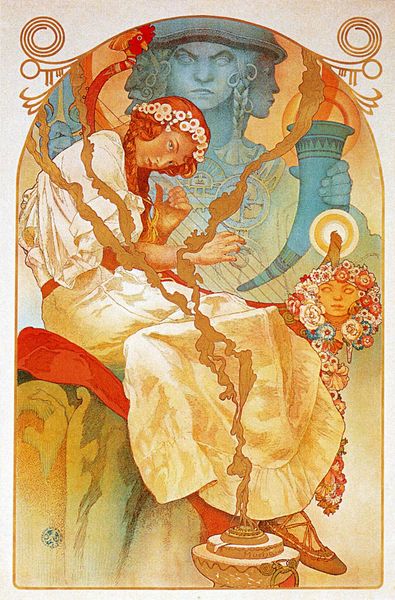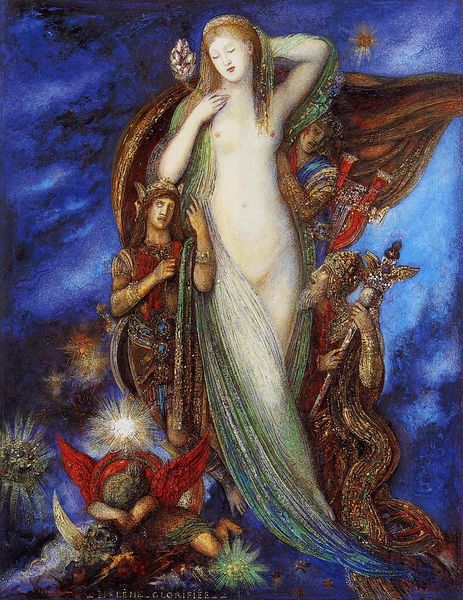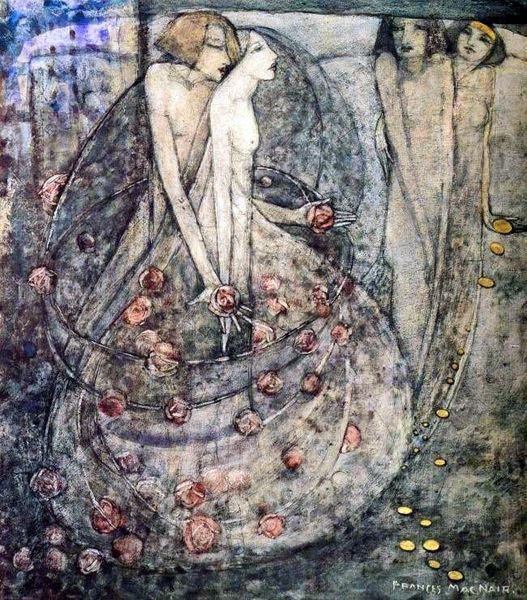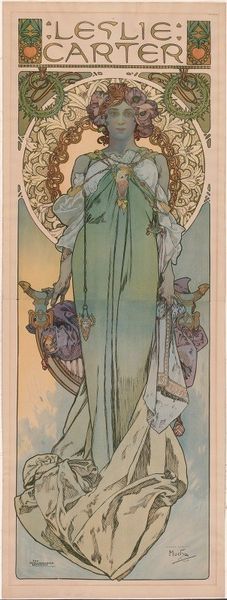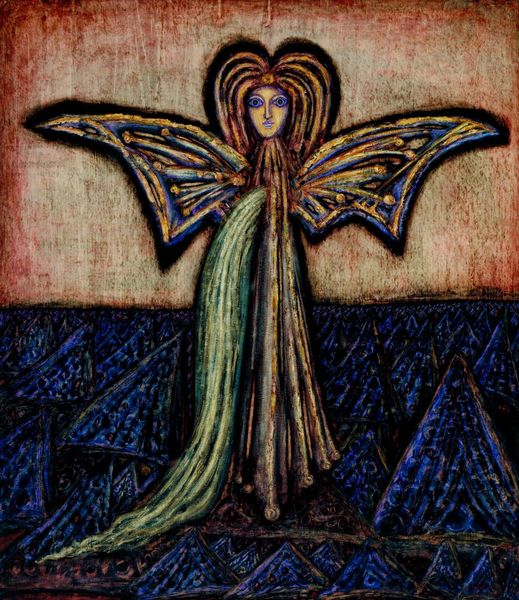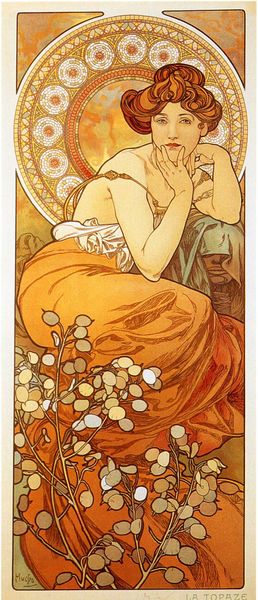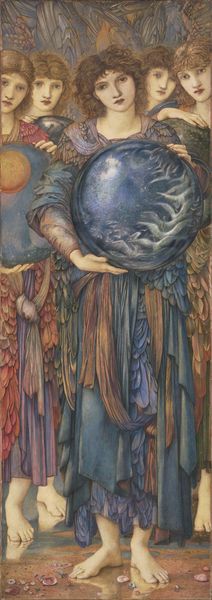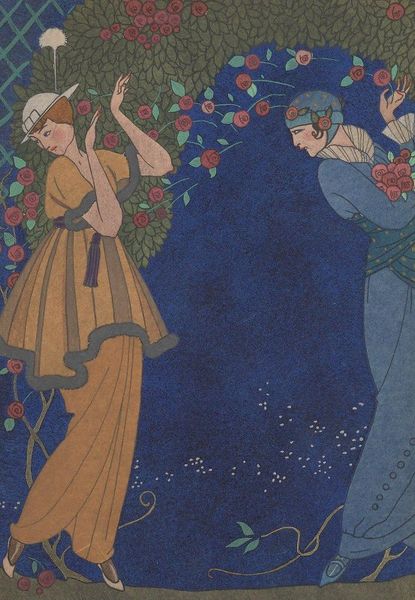
drawing, coloured-pencil
#
portrait
#
drawing
#
coloured-pencil
#
figuration
#
coloured pencil
#
naive art
#
japonisme
#
watercolour illustration
Dimensions: 17.5 x 28 cm
Copyright: Public domain
Curator: Let's discuss this beautiful artwork by James Abbott McNeill Whistler, "Design for a Mosaic," created in 1891 using colored pencils. Editor: My first impression is one of shimmering elegance. The golden tones give it a feeling of opulent warmth, like a dream bathed in sunlight. Curator: Indeed. Whistler's interest in Japonisme is very evident. The subject, a woman in what seems to be a kimono, holding an umbrella, points directly to the influence of Japanese aesthetics on Western art during that period. Editor: Yes, and notice how Whistler simplifies forms, almost abstracting the floral patterns on her robe. The composition, with its flattened perspective and emphasis on decorative surface, reads like a consciously stylized exercise. Curator: Right. This piece needs to be situated within the social and political landscape of the late 19th century, as well as Western fascination with the Orient. It reflects a romanticized view of Japanese culture, one often divorced from its actual lived realities. How does Whistler portray this figure, what stereotypes does this reinforce, and who benefits from this representation? Editor: I agree, that reading is relevant. Though beyond the figure's social context, the visual harmony achieves a certain power through its restricted palette and delicate execution. Consider the interplay between the figure and ground: How the textured background, built up with many layers, makes her softly stand out. Curator: We can further explore the role of women in art and society during that era. Consider the concept of women being objectified and aestheticized for the male gaze and how Whistler might contribute or subvert these prevailing dynamics in his broader artistic project. Editor: Perhaps, and yet I think Whistler sought to go beyond social commentary; for him it might be as much about purely aesthetic achievement and finding visual strategies of design as much as social power relationships. Curator: Maybe a balance of both can be achieved! These observations enhance how we may approach the image and gain insight into art historical and political interpretations. Editor: I appreciate how discussing both artistic methods and political contexts gives you a fuller picture. Thank you!
Comments
No comments
Be the first to comment and join the conversation on the ultimate creative platform.
